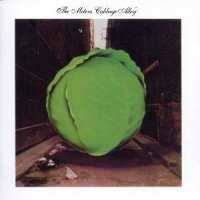Cabbage Alley
Cabbage Alley is the fourth album by the funk group The Meters, inspired in part by Professor Longhair's "Hey Now Baby". It is their first album for the Reprise label after leaving their Josie Records when it went bankrupt in 1971.
Interviewed in 2001, the 69-year-old New Orleans bass drummer Lionel Batiste Sr. described the old neighborhood: "Cabbage Alley was around Perdido Street. They had a lot of musicians down there—it was almost like a [red light] district—fast women. Near the battlefield. They had a whole lot of pimps, too, in there."
Track listing
|
| 1. |
"You've Got to Change (You've Got to Reform)" | Ziggy Modeliste, Leo Nocentelli |
5:15 |
| 2. |
"Stay Away" | Nocentelli |
5:22 |
| 3. |
"Birds" | Neil Young |
4:23 |
| 4. |
"The Flower Song" | Nocentelli |
4:51 |
| 5. |
"Soul Island" | Modeliste, Art Neville, Nocentelli, George Porter, Jr. |
3:10 |
| 6. |
"Do the Dirt" | Nocentelli |
2:36 |
| 7. |
"Smiling" | Neville |
3:09 |
| 8. |
"Lonesome and Unwanted People" | Nocentelli |
4:39 |
| 9. |
"Gettin' Funkier All the Time" | Modeliste, Nocentelli, Porter |
3:19 |
| 10. |
"Cabbage Alley" | Neville |
3:30 |
|
|
| 11. |
"Chug Chug Chug-A-Lug (Push and Shove) Part I" | Modeliste, Nocentelli |
3:30 |
| 12. |
"Chug Chug Chug-A-Lug (Push and Shove) Part II" | Modeliste, Nocentelli |
3:26 |
Personnel
- Barry Hansen Liner Notes
- Bob Irwin Mastering
- Tim Livingston Project Manager
- Bunny Matthews Liner Notes
- Ziggy Modeliste Composer, Cowbell, Drums, Gourd, Wood Block
- Art Neville Composer, Keyboards, Organ, Piano, Tambourine, Vocals
- Arthur "Red" Neville Cowbell, Organ, Piano, Tambourine, Vocals
- Cyril Neville Congas
- Leo Nocentelli Composer, Guitar, Tambourine, Vocals
- George Porter, Jr. Bass, Composer
- Al Quaglieri Mastering
- Rich Russell Design
- Squirell Congas
- Ed Thrasher Art Direction
- David Willardson Cover Art
References
- Burns, Mick (2006), Keeping the Beat on the Street: The New Orleans Brass Band Renaissance, Baton Rouge: LSU Press, ISBN 978-0-8071-3333-0 .
- Stewart, Jon (14 May 2015), "Adam Horovitz", The Daily Show with Jon Stewart, New York: Comedy Central .
- Thompson, Dave (2001), Funk, San Francisco: Backbeat Books, ISBN 0-87930-629-7 .
